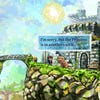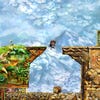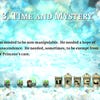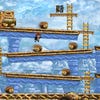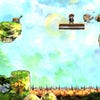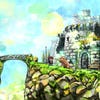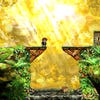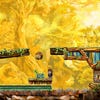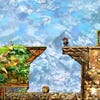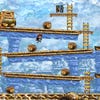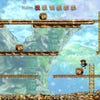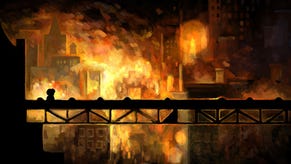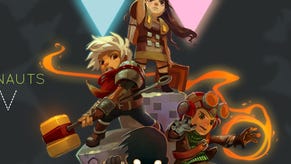Jonathan Blow in his own words
The Braid creator in his most revealing interview yet.
When Jonathan Blow released Xbox Live Arcade game Braid in 2008 his life was changed forever. Almost universal praise greeted the captivating downloadable game - even Eurogamer awarded it 10/10. Braid, and by association Blow, became overnight sensations.
Now, some three years later, Blow is hard at work on his difficult second album, the mysterious first-person 3D puzzle game The Witness. It rekindles memories of Valve's mind-bending Portal (Blow denies any such influence), except there are no guns and nothing can kill you. It is a game Blow describes as Myst brought up to date. And it is a game we know next to nothing about.
Speaking to Eurogamer at the GameCity festival in Nottingham, Blow reveals his motivations, game design philosophies and recounts the magic that was Braid.
I consider myself a game developer. I do consider that I make art. I don't think of myself as an interactive artist, because to me that means... There are these people who make these museum pieces that are interactive in a way I would say is not high quality. We do much better interactivity than that in the games business.
There's something about the fact it's a game that makes that important. When you say I'm just making an experience, the default way of doing that produces something that's not a very satisfying or rich experience. That's mostly what you see among people who make interactive art.
If you train yourself as a game designer and you know how to make a good videogame, then if you wanted to go make a more abstract experience, you have more of a skill set to do that.
But even that is not really what I'm doing. I very clearly am making something that stands on its own as a good game, but that goes in a different direction from most games people are making.
I have a different reason behind the games I'm making than most people do, but they're very definitely videogames, and they're very definitely trying to be good games and interesting to play.
I wasn't trying to detract from that line of work in any way. Anybody who's going to design a videogame hopefully has their own personal idea of what's interesting, and that's how we get a diverse world full of different games. So from my personal sensibility I look at those games and I'm like, this isn't how I would do it because I don't like the way this is interacting.
The first example was in a first-person shooter - there's all this stuff that's gotta look good, but really you're just running through and you're not stopping to look at anything because the game design doesn't want you to stop and look at anything.
From one point of view that's totally fine. We have a long history of making first-person shooters, and we know what people buy. People do buy a game more if it has these nice graphics, and sometimes they stop and notice small details.
That's part of it. Even if people don't notice details explicitly, they affect their impression of the game. You might have some very detailed things and people might run past it really fast, but it feels better visually and abstractly to play than if those details weren't there.
I'm not saying those things are useless. I'm just saying there's potential there in a different direction that isn't tapped by those games. That's what I want to do by making a game that is at the player's own pace. You just walk around. It's not a fast action game in any way. There's nothing in the world that's going to kill you, ever. So the question then is, given those constraints - I'm just walking around casually, there are no threats, all these puzzles are very laid back and waiting for me to come to them - how then do I still make a game that's interesting by modern standards and that modern players are going to want to play? That's an interesting design challenge.



